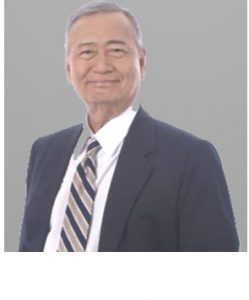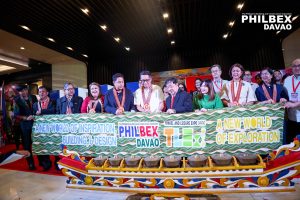 Part 1
Part 1
Since about five decades ago, the Philippine economy has gone what appears to be an irreversible downward spiral in comparison with our now 9 ASEAN neighbors. As shown in a World Bank report, in 2020, the Philippines ranked No. 6 in per capita income (gross domestic product) at almost US$3,000. Vietnam appears to be catching up on us soon, making us No. 7 and just ahead of Laos, Myanmar, and Cambodia. We used to be No. 1.
We have been overtaken by Indonesia, which now has about one-a-half times our per capita income; Thailand, a little bit more than double; and Malaysia by almost four times, not to mention Singapore which is way, way up, and Brunei which is also quite high.
This continuing cascade certainly gives the Filipino a terrible feeling. Be that as it may, if we want to be reasonably well-off and catch up with our ASEAN friends, we need to leapfrog. Our neighbors will not be standing still.
The details of growing an economy maybe complex, but the broad view can be drawn simply for easier appreciation.
On the demand side, there is consumption (household and government) and investments. On the supply side, there is economic output (agricultural, industrial, and service). When consumption or investment rises, the increase triggers production of more output which, in turn, creates more employment and therefore more household spending money; and more taxes and hence more money in government treasury; which together drive additional consumption and investments.
Barring any disaster, calamity, or huge human error, a virtuous economic cycle develops. No matter where you start in the cycle, for as long as the action is well thought out, that start will create a chain reaction. Moving up, going round; up, round.
That virtuous cycle can work by itself (a macro characterization of Adam Smith’s ‘invisible hand’). But it is going to be slow or oscillating up and down. It needs a stimulator, who knows what he is doing. In an organized society, that stimulator is the government. Obviously, the Philippines has not been blessed with having the right stimulator for decades.
But we cannot turn back the clock. We just have to move forward. And this time, let’s do it with intense seriousness of purpose and audacity. We need to find the right direction, devise plans and get going, all at the same time. We have to leapfrog.
If I were the next President, that’s exactly what I will do. We will stimulate the growth of our economy and do it continuously.
In doing so, we will first take stock of our resources to find our direction. Let’s start with geography.
The Philippines is beset with natural disasters, especially typhoons that come naturally every year at a frequency that usually exceeds the number of the letters in the alphabet. if we look at the map of the Philippines, the typhoons generally enter the country at its mid-east (Leyte, Samar and the Bicol region) and move northwest (Isabela and Cagayan). This means that economic activities within and around this typhoon belt is disrupted many times in a year, resulting in perennial big loss in productivity and damage in infrastructures.
So, to avoid much of such disruptions, losses, and damages on expansionary economic activities, we need to locate elsewhere any deliberate future economic expansions to such places as southwest Luzon (Zambales, Bataan), West and Central Visayas and the whole of Mindanao, including ARMM. Accordingly, we have to begin constructing the necessary infrastructures in these areas, especially in those places that have suitable coastal waters for building international ports. Doing so will also decongest the National Capital Region and Region IV-A and distribute economic activities more widely and somewhat evenly around the country.
The Philippines is an archipelagic country that makes transportation of goods and people slow and costly. This extra cost makes the country less competitive. For this reason, we will endeavor to connect as many of the islands as possible by surface water, above water, under water and air to ease up travel and reduce transport costs. We will identify all the points where bridges, underwater tunnels and ferries could be built, preferably with private capital participation, and document them in a long-term plan.
We will consider deregulating shipping to the extent safety will allow to increase competition and substantially reduce shipping costs which are presently notoriously very costly.
In air travel, we will equip all existing local airports with night landing facility to increase air travel and reduce airfare for both persons and cargo. We will identify undeveloped inner geographical areas which cannot be reached by sea and build airports where none presently exists. To encourage air travel in moving people and goods to points that are presently unprofitable to the airlines, we will develop a scheme where the government will provide subsidies to airlines at an amount equivalent to the difference between the reasonably profitable seat and cargo occupancy rates and actual seat and cargo occupancy rates. This subsidy will gradually decrease and disappear as the area served by the airport becomes developed. We will apply the same scheme for ferries. The selection of carriers will be done through proper and transparent bidding process.
To speed up economic development, especially in undeveloped areas, we will blanket the entire country with state-of-the-art telephony coverage, wireless and land lines, whichever is suitable to cover the still uncovered geographic area. In completing the coverage, we may need to acquire dedicated satellite connectivity. All these may take a few years. They may have to be funded by the government, but we will explore how we can engage private capital to participate. I cannot, at this time, make an estimate of the total costs of this project as we need to put together the experts who can. But I will do so in due time and will find the funds and develop the financing plans to pay for the costs.
There are other resource areas that contribute to the comparatively higher costs of doing business in the Philippines which naturally deters investing in the country. Setting aside labor cost for the time being, there is electricity, a major business cost. Based on World Bank data for 2019, we have the highest electricity cost, at 18.10 US cents per KWh, in the entire ASEAN, except for Cambodia’s which is slightly higher. We will find ways to decisively reduce electricity costs. We will closely examine the whole process of determining the billing rates for electricity from power generation, distribution, and retailing. In this connection, we will examine why a country like Singapore could charge to its electricity consumers in 2019 only 5.50 US cents per kWH, a much lower rate at only 30% of ours. We may learn and adopt some good practices as a result.
We will establish what is fair to both the power suppliers on the one hand and the ultimate users on the other hand. I believe there is room for reducing electricity cost.
Another important economic resource is manpower. Sadly, at present, we do not have adequately educated manpower to enable us to move rapidly to higher value economic activities.
As pointed in Part 5 of this Commentary Series, nearly half of our adult population are not high school graduates. But as also pointed out in Part 5, we will carry out the remedial measures to fix this obstacle quickly.
We have a somewhat similar problem in the college graduates sector. Based on data released by the Department of Education, among those who graduated in school year 2019-2020, 50% finished business-related and teaching courses, 11% engineering and technology and 10% information technology.
As to the latter two categories, I do not have the details, but I suspect these courses are more on the lower level of skill and sophistication of these disciplines. The said proportional distribution has not changed over the years; the distribution is practically the same among graduates in school year 2014-2015, six years ago.
Clearly, we have inadequate talents to get us to move to higher value economic activities, like research and development, artificial intelligence, and robotics. Or even higher electronics technology; metallurgy; plane, ship and other heavy industrial goods designs; and the like. We need more physicists, especially quantum physicists; biologists; microbiologists; biochemists; metallurgists; and engineers, especially in electronics, hydraulics and aeronautics.
For this reason, we will deliberately shift the education of our young adults to the sciences, engineering and mathematics through exhortation and scholarships, both in local and foreign schools. More generally, we will consider imposing a mandatory minimum level of test results for entry to college, especially in state colleges and universities which are tuition-free, to lift the quality level of our college graduates. At the same time, we will provide a wider range of free vocational studies at public high schools and at Technical Education And Skills Development Authority (TESDA) for those who do not qualify to enter college.
Philippine labor cost is high for the kind of output we produce, and this makes us less competitive. But we cannot possibly reduce labor cost. To offset this higher cost, I am confident that the improvements that we plan to make in Philippine education and vocational training will redound to higher productivity when our young adults go to work and apply their better skills.
Clearly the challenges we face are huge. But we need to take them on—and do it on a faster tempo. We will. And we will overcome. With the help of all our people. (To be continued)
Mr. Punongbayan is a well-experienced public accounting practitioner. He founded Punongbayan & Araullo 33 years ago and which is now one of the prominent and leading professional accounting firms in the country. On April 16, 2009, Punongbayan—along with several like-minded Filipinos—founded a national political party under the name of Buklod. As a political party, it aims to replace the present leaders with an entirely new set of trailblazers who do not carry the baggage and ineffectual governance of the past.

